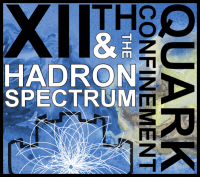Speaker
Description
Kinetic theory is one of the main dynamical frameworks to model ultrarelativistic heavy-ion collisions at RHIC and the LHC. For example, it has been used to study i) thermalization during the early partonic stage of the collision, ii) hadronic mixture evolution in late stages of the reaction, and more recently also iii) proper inclusion of nonthermal phase space density corrections for particles coming from a dissipative quark-gluon fluid. It is well-known that at large enough opacities on-shell kinetic theory gives back hydrodynamics (this has been used, for example, to systematically formulate causal versions of relativistic dissipative hydrodynamics). The practical question is how high opacities need to be for hydrodynamic behavior in the rapidly expanding small systems present in heavy ion reactions. I will address this in light of recent results from the AMPT transport model that can explain, with unexpectedly modest opacities, features in the data that have traditionally been thought to be the hallmarks of hydrodynamics.




